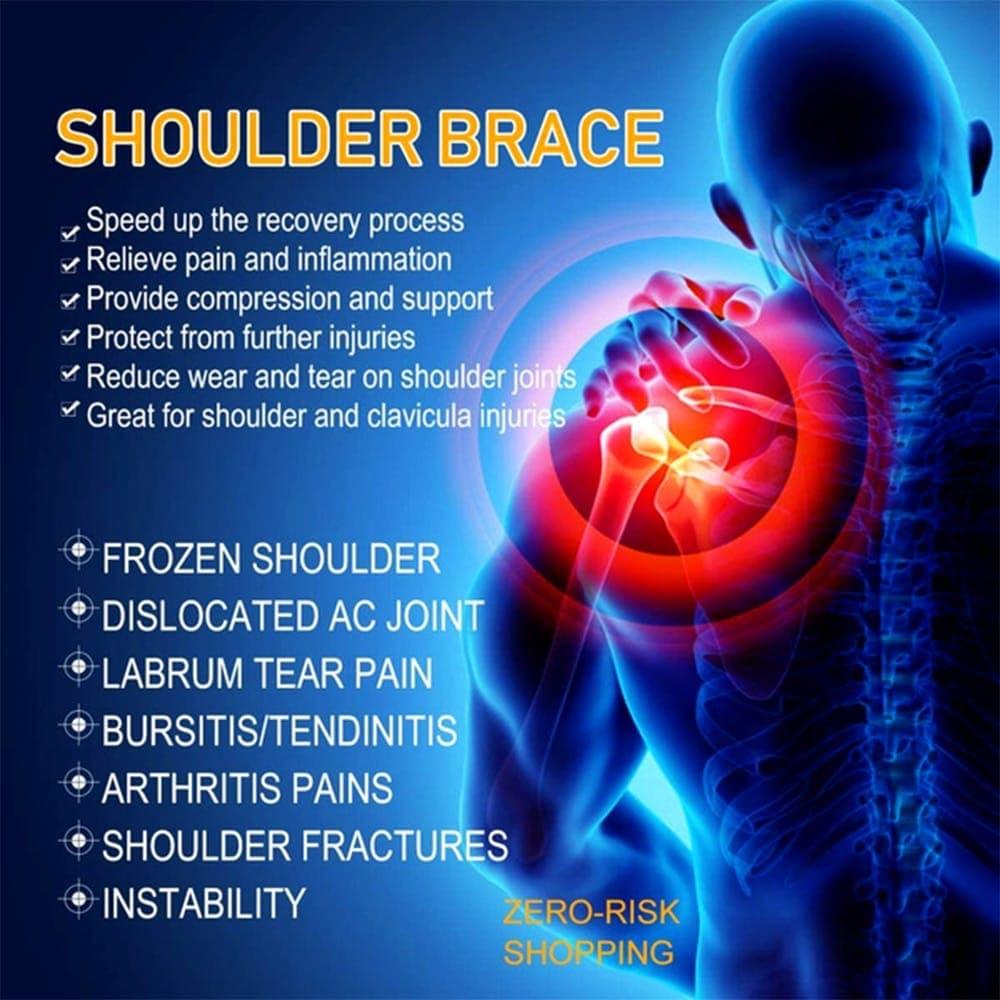If you've been struggling with shoulder pain—whether from an injury, poor posture, arthritis, or overuse—you’re probably wondering if a shoulder support belt is the answer. Good news: you’re in the right place. Let’s walk through what shoulder braces actually do, who should wear them, and how to use one the right way.
Who Should Wear a Shoulder Brace?
The short answer? More people than you’d think.
You should consider wearing a shoulder brace if you:
-
Have a rotator cuff injury
-
Are healing from a shoulder dislocation or fracture
-
Deal with chronic shoulder instability
-
Experience arthritis-related pain
-
Want to improve posture and shoulder alignment
-
Engage in overhead sports or repetitive shoulder activities (think: tennis, swimming, weightlifting)
The brace gives your shoulder structure, support, and rest when you need it most.
What Is the Purpose of a Shoulder Belt?
A shoulder support belt (also called a shoulder brace or shoulder immobilizer) is designed to:
-
Stabilize the joint during healing
-
Relieve pressure on the tendons and ligaments
-
Prevent unnecessary movement
-
Improve posture
-
Reduce inflammation and pain
Think of it like a gentle reminder for your shoulder: “Hey, take it easy!”
Is It Okay to Wear a Shoulder Brace All Day?
Yes and no—it depends on your condition.
✅ Okay for short-term injuries or post-surgery recovery, under medical guidance
🚫 Not ideal long-term without breaks, since overuse may weaken your muscles
Use it during strenuous activities or flare-ups, but also give your shoulder time to move and strengthen naturally. Talk to a doctor or physio for a customized wear schedule.
How Long Do You Wear a Shoulder Immobilizer?
Recovery varies from person to person. Most commonly:
-
Mild strains: 1–2 weeks
-
Rotator cuff injuries: 4–6 weeks
-
Post-surgery or dislocation: 6–12 weeks (with gradual weaning)
The brace isn’t meant to be a permanent accessory—it’s a short-term helper on your road to recovery.
Does Compression Help Shoulder Pain?
Absolutely. A compression shoulder brace increases blood flow and reduces swelling, which is especially helpful if your pain is linked to inflammation or overuse.
It also helps calm nerve sensitivity, which is why many people feel immediate relief when wearing one.
Does a Compression Shoulder Brace Really Work?
Yes, especially when worn properly and consistently. It:
-
Reduces pain
-
Improves range of motion
-
Speeds up healing
-
Helps with posture and joint alignment
However, a brace is not a standalone cure—it works best with stretching, strengthening, and rest.
What Is the Fastest Way to Heal a Broken Shoulder?
If you've had a fracture or break, here’s the game plan for faster healing:
-
Use a shoulder immobilizer to keep the joint stable
-
Take anti-inflammatory meds (only as prescribed)
-
Attend regular physiotherapy sessions
-
Do guided shoulder exercises once cleared
-
Get proper nutrition to help bones repair (calcium + vitamin D are key!)
A shoulder brace is vital in early healing stages, but don’t forget the other parts of the plan.
Will a Shoulder Brace Help With Rotator Cuff Pain?
Yes, it absolutely can.
Rotator cuff pain is often caused by overuse or a tear in the tendons. A shoulder brace helps by:
-
Limiting shoulder movement
-
Reducing pressure on the tendons
-
Providing warmth and support
Paired with rest and gentle rehab exercises, many people see real improvement within weeks.
How Tight Should a Shoulder Brace Be?
This one’s important—it should be:
-
Snug but not suffocating
-
Tight enough to provide support
-
Loose enough to allow blood flow and breathing
If your skin turns red or numb, loosen it. If it slips around, tighten it. It may take a few tries to find the sweet spot.
Should I Strap My Shoulder?
Strapping or taping is often used in sports, but it’s not always effective for long-term or serious injuries. A shoulder brace is better for sustained support, especially if you need to limit movement for recovery.
Still, if you're in between games or just need temporary relief, strapping can help in a pinch.
Final Thoughts
Wearing a shoulder brace might feel like a small thing, but for many, it’s the start of real healing. Whether you’re dealing with a rotator cuff issue, arthritis, or recovering from an injury, the right shoulder support belt can give your joint the stability it needs to recover safely.
Just remember: healing takes time, patience, and sometimes a little extra support—literally.

